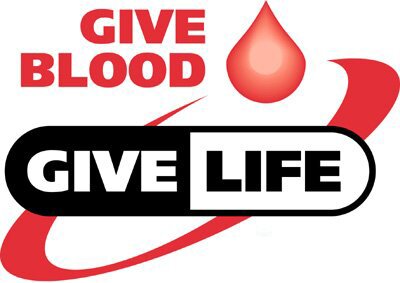 The other week found me in a parish hall, poring over the questions on an electronic tablet, all needing to be filled out before I could be allowed to give blood. It may seem a little counterintuitive to make it harder to give blood — on August 11, the Puget Sound Blood Center was trying to talk people into giving more of it:
The other week found me in a parish hall, poring over the questions on an electronic tablet, all needing to be filled out before I could be allowed to give blood. It may seem a little counterintuitive to make it harder to give blood — on August 11, the Puget Sound Blood Center was trying to talk people into giving more of it:
Western Washington’s blood supply has been significantly reduced by a spike in demand over the last 10 days. This increased need for life-saving blood has placed stress on the supply resulting in a 20 percent drop in inventory since Sunday.
Blood donation comes with a ticking sound, a count of the roughly 42 days that whole blood can be banked before it’s no longer usable. Blood banks and hospitals are daily involved in a complex dance to move blood to where it’s needed.
If you are gay, of course, you can pay no attention to donating life-saving blood. While there’s a long list of reasons you should temporarily not give blood, currently there’s a lifetime “deferral” for men who have at any time since 1977 had sex with other men.
This is an FDA policy, nothing to do with your local blood bank.
You’re not paid, typically, for giving blood. It’s something you do out of civic responsibility, or because you know someone who really needed blood once. It’s not precisely fun. There’s the questionnaire to fill out, and then you sit down with an actual medical professional, and they ask you some more questions, check the inside of your arms.
If cleared, you hop up on a gurney or reclining chair, and someone washes your preferred arm with antiseptic. Finally someone comes by with a 16- or 17-gauge needle (these are popular for blood donation, wide enough to allow red blood cells through without rupturing them), and you feel the puncture, an oddly discomfiting feeling, as if someone’s letting the air out of you, for about ten minutes.
You slowly squeeze a squeezable toy they give, the pint fills up, and then the needle slips out and you’re back to feeling whole again, while pressing some gauze to your elevated arm. Your choice of a band-aid or bandage. Standing up too quickly will leave you light-headed, and you’re advised to spend another ten minutes drinking something with sugar in it, and perhaps downing a sugar cookie or two.
All in all, this might have taken an hour out of your day. You can do it again in about two months. Even if you’re 16, all you need is your parents’ consent. Again, unless you’re gay. Then, you would have gotten hung up much earlier, on questions like these. Have you:
- Had sexual contact with anyone who has HIV/AIDS or has had a positive test for the HIV/AIDS virus?
- Male donors: had sexual contact with another male, even once (since 1977)? (Females: check “I am female.”)
- Female donors: Had sexual contact with a male who has ever had sexual contact with another male? (Males: check “I am male.”)
The FDA believes that men who have sex with men (MSM) are, “as a group, at increased risk for HIV, hepatitis B and certain other infections that can be transmitted by transfusion.” In particular, the FDA claims to be concerned about the “window period” just after HIV infection, when very low levels of virus are present in the blood. That window makes it unlikely for an HIV test to detect an infection…but it also closes in about two weeks. A lifetime deferral seems disproportionate.
“There is no scientific basis for a lifetime deferral,” says David Larsen, the Puget Sound Blood Center‘s director of communications. The Blood Center supplies most of Western Washington, and is the only blood bank in the state with a research institution attached. Besides banking blood and organizing drives, the center provides transfusions and cellular therapies, and leads research in areas like donor matching and blood clotting.
That’s not his opinion: It’s the joint statement of the AABB (formerly the American Association of Blood Banks), America’s Blood Centers (ABC) and the American Red Cross.
Since 2006, they have been arguing to the FDA that the rules for gay men should be harmonized with “criteria for other groups at increased risk for sexual transmission of transfusion-transmitted infections.” If you are not a gay male, you can engage in high-risk behavior and see only a 12-month deferral:
For example, the current deferral period for individuals who have had sexual contact with an individual with HIV or viral hepatitis is 12 months. In each of these cases, the vast majority of donors with prevalent infections will be positive by both antibody tests and nucleic acid amplification testing (NAT). This remains true even with increased numbers of HIV-infected MSM, as recently reported by the Centers for Disease Control and Prevention. The current “window period” from the time an individual is infected and the time screening tests would detect infection – approximately nine days for HIV, 7.4 days for HCV, and 30-38 days for HBV (without NAT) – falls well within a one-year deferral period.
Nothing is fool-proof. The FDA can point to the single case of HIV transmission via transfusion between 2000 and 2008 as evidence both of its prudence and of the need for vigilance. Yet what it hasn’t shown is that the lifetime deferral is substantively related to that record. If, as the AABB, ABC, and Red Cross maintain, a year’s deferral is enough, the FDA has merely added 33 extra years as padding.
The prospect of the non-demonization of gay men interested in donating blood has the homophobic up in arms. When the Department of Health and Human Services announced it would study lifting the lifetime deferral, a wealth of vitriol surfaced, none of it medically relevant, most of it hyperbolic.
HHS will look into four areas:
- how the risk of blood transmissible diseases in the current donor population relate to risk factors in donors;
- the root cause of Quarantine Release Errors, or the accidental release of blood not cleared for use;
- if potential donors correctly understand the current questionnaire and if men who have sex with men would comply with modified deferral criteria; and
- if alternative screening strategy, such as pre- and post-qualifying donation infectious disease testing, for men who have sex with men would assure blood safety while enabling collection of data that could demonstrate safe blood collection.
Senator John Kerry (D-Mass.) and Representative Mike Quigley (D-Ill.) both went on record as applauding the HHS study. Kerry was quoted as saying, “HHS is doing their due-diligence and we plan to stay focused on the end game—a safe blood supply and an end to this discriminatory ban.”
All this over giving blood. You’d think it would be the one thing that could unite people.


